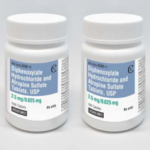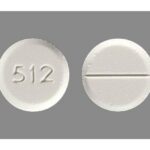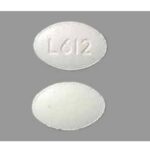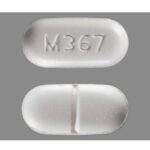What Kind Of Pill is White with M 15 On One Side?

The white round pill with the imprint M 15 on one side of the pill has been identified as Atropine Sulfate and Diphenoxylate Hydrochloride 0.025 mg / 2.5 mg supplied by Mylan Pharmaceuticals Inc.. M 15 white pill is a combination medicine used to treat diarrhea along with other measures (eg, fluid and electrolyte treatment) in adults and children who are at least 13 years old. Atropine and diphenoxylate may also be used for purposes not listed in this medication guide.
The M 15 white pill helps stop diarrhea by slowing down the movements of the intestines. Diphenoxylate is chemically related to some narcotics and may be habit-forming if taken in doses that are larger than prescribed. If higher than normal doses of the combination are taken, the atropine will cause unpleasant effects. This medicine is available only with your doctor’s prescription. Diphenoxylate, one of the ingredients in this medication, is itself a Schedule II controlled substance. However, when it’s combined with atropine, the other ingredient in M 15 white pill, the risk of misuse is lower.
How should this medicine be used?
Follow the directions on your prescription label carefully, and ask your doctor or pharmacist to explain any part you do not understand. Take M 15 pill exactly as directed. Do not take more of it or take it more often than prescribed by your doctor.
Your diarrhea symptoms should improve within 48 hours of treatment with M 15 pill. Your doctor may tell you to decrease your dose as your symptoms improve. If your symptoms do not improve or if they get worse within 10 days of treatment, call your doctor and stop taking M 15 pill.
M 15 pill can be habit-forming. Do not take a larger dose, take it more often, or for a longer period of time than your doctor tells you to. Atropine has been added to diphenoxylate tablets to cause unpleasant effects if this medication is taken in higher doses than recommended.
What are the side effects of M 15 white pill?
The most common side effects reported in persons taking diphenoxylate include:
- drowsiness,
- headache,
- nausea,
- vomiting, and
- dry mouth.
Other important side effects include:
- euphoria,
- depression,
- lethargy,
- restlessness,
- numbness of extremities,
- loss of appetite, and abdominal pain.
Although the dose of atropine in the M 15 white pill is too low to cause side effects when taken in the recommended doses, side effects of atropine (including dryness of the skin and mucous membranes, increased heart rate, urinary retention, and increased body temperature) have been reported, particularly in children under two years of age and children with Down syndrome. Pancreatitis and toxic megacolon also have been reported.
Symptoms of overdose may include the following:
- fever, fast heartbeat, decreased urination, flushing, dryness of the skin, nose, or mouth
- dryness of the skin, nose, or mouth
- changes in the size of pupils (black circles in the middle of the eyes)
- uncontrollable eye movements
- restlessness
- flushing
- fever
- fast heart beat
- decreased reflexes
- excessive tiredness
- difficulty breathing
- loss of consciousness
- seizures
- difficulty speaking
- seeing things or hearing voices that do not exist
What other information should I know?
Keep all appointments with your doctor. Before having any laboratory test (especially those that involve methylene blue), tell your doctor and the laboratory personnel that you are taking diphenoxylate. Do not let anyone else take your medication. M 15 white pill is a controlled substance. Prescriptions may be refilled only a limited number of times; ask your pharmacist if you have any questions.
It is important for you to keep a written list of all of the prescription and nonprescription (over-the-counter) medicines you are taking, as well as any products such as vitamins, minerals, or other dietary supplements. You should bring this list with you each time you visit a doctor or if you are admitted to a hospital. It is also important information to carry with you in case of emergencies.





